A Guide To Understanding Worrying And Rumination

We all worry. Deadlines, undone tasks, relationships, money, health — there's an infinite source of worry in our lives. That's why it's not surprising that about 38% of people worry every day.
Worrying and ruminating aren't necessarily bad. But when we get caught up in overthinking, this can lead to anxiety. In fact, overthinking is a key component of many kinds of anxiety. There's a vicious circle in which negative thoughts and feelings feed on each other.
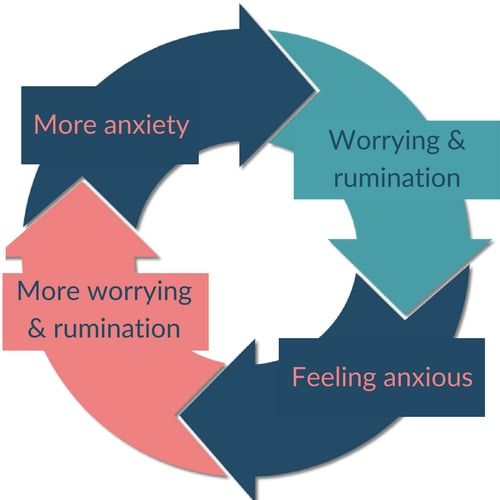
The overthinking comes in two forms: rumination and worry.
- Rumination: repetitively replaying events from the (recent or distant) past
- Worrying: fear that something bad will happen in the future
Whether it's about things that have already happened or about things that might potentially happen in the future, anxious people usually feel the need to think things through. And indeed, worrying and rumination is similar to problem solving. For many people who worry, they feel as if they're solving a problem.
However, their thinking is in overdrive. Negative thoughts often come back in circles and people think about the same things over and over again. Without ever coming to a solution. And this kind of worrying can get out of hand.
Learn to handle worries & thoughts in only 5 minutes per day
Why Do I Worry All The Time?
The job of the human brain is to interpret the world and find patterns. Unfortunately, when it does that, it often makes mistakes. Some of those mistakes in the rumination process lead to irrational emotional reactions. Those are called cognitive distortions.
Psychologists developed a model that helps us see the connection between certain situations and our irrational and negative thoughts and those emotional reactions. How we think in specific situations affects how we feel emotionally and physically and how we behave. Here's what this looks like:
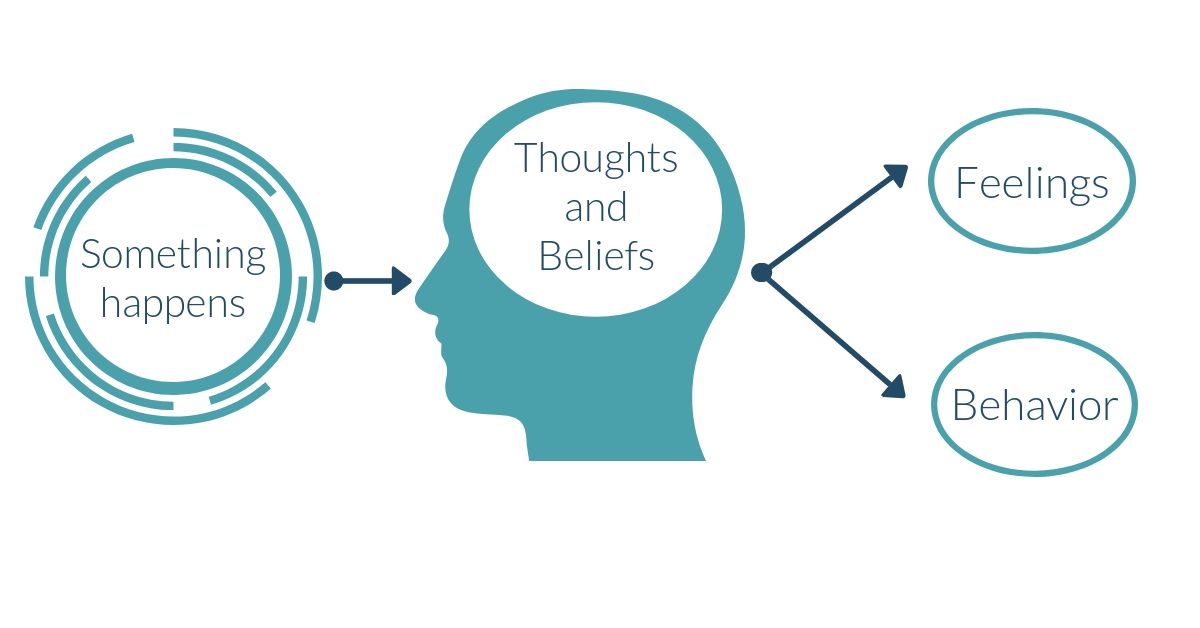
Cognitive distortions happen at the level of our thoughts and beliefs. They come in a variety of different forms but they always follow the same patterns.
1. Imagining The Worst Possible
Many worries are born because we assume that things will turn out terribly. Everybody has done this at some point in their lives but people who do it routinely can end up worrying and ruminating excessively. Worries of this kind always start with two simple words.
'What if ...?'
This little question conjures up our worst fears and can trigger a cascade of negative thoughts. That's how it's easy to go from imagining a benign inconvenience to a full-fledged catastrophe. Hours of worry and rumination can follow and it's all because of this little question.
2. Confusing Unpleasant Feelings With Real Danger
This is also called emotional reasoning. This cognitive distortion typically sounds like this:
"I feel anxious, therefore this must be dangerous"
It's assuming that things are the way you feel. But feelings don't always reflect reality accurately. If your innate stress response is over-sensitive and goes off at times of perfect safety, this makes no sense.
3. Thinking You Can Read Other People's Minds
That's a cognitive distortion that especially people who are socially anxious fall in often. They view social situations as potentially dangerous and are quick to assume that other people think negatively about them. And while much of this is pure imagination, the consequences of this way of thinking are very real: Instead of enjoying other people's company and looking forward to meeting friends, they tend to dread social interactions.
4. Filtering Out Positive Information
The same way a good pair of sunglasses filter out UV rays, the worrying human brain mostly processes negative information. It can completely ignore positive things and zoom in on the negative. Psychologists call this the brain's inherent negativity bias (which has been a central survival mechanism for millions of years) and it can wreak havoc when we are unaware of it. Instead of seeing the world clearly, we ignore anything positive. Not surprisingly, this not only causes anxiety but can also lead to depression.
5. Overestimating Risk
Worriers usually overestimate the risk that things will go wrong. One negative experience is often enough to make worries believe that this is likely to repeat in the future.
That's a big deal because almost all life decisions involve some amount of risk. And once the brain overestimates risk, it can find something dangerous in almost any situation. Which makes it difficult when you want to learn how to overcome rumination.
6. Setting High And Rigid Standards
People who worry a lot tend to evaluate themselves and the world based on rigid standards. They want the world to be perfect and everything that doesn't meet their high expectations is considered a problem. And that's especially true for everything related to themselves.
The result is that they try to motivate themselves with words like "should", "must" and 'ought to'. A prominent psychologist even called this 'musturbation'.
'I must do a great job on this assignment'
Not surprisingly, this type of worrying typically centers around self-blame and negative self-judgment.
Where Worrying And Rumination Happens
Worries and rumination can center on different areas. Triggers vary from person to person. From social situations to health topics or a general tendency to worry.
Worrying About Social Situations
In social anxiety, worrying and rumination center around being negatively judged and evaluated by other people. It's common to worry about upcoming social events (such as parties or going to work or school) and some people dread being the center of attention or talking to strangers.The rumination process looks something like this:
'What if I don't know what to say?'
'Everybody's going to see that I'm nervous'
Similarly, many people ruminate about social situations after the fact. They think back on what they might have said wrong or how they might have embarrassed themselves. This is how one person on Reddit explains it:
Coping Techniques for Post-Event Rumination? from r/socialanxiety
This obsessive rumination is typical for people with social anxiety. There's even a special term for this replaying of conversations in one's mind: brooding.
Worrying About Health
If you're constantly worrying about your health, this is a strong indicator for something called health anxiety.
In health anxiety, worrying focuses on the possibility of having a serious disease. People can obsess over bodily functions (such as faster heartbeat or breathing) just as much as over physical sensations (a headache or stomach ache, say). Even worrying about a virus or disease that they heard on the news can trigger excessive worries.
It's possible to worry that your physical sensations will spiral out of control and cause a panic attack. If this happens regularly, psychologists typically talk about a panic disorder. And researchers know that worrying about panic attacks can actually trigger them!
Generally Worrying A Lot
Many people simply worry because they believe it helps them prevent bad things from happening. The focus of their worry can change from one moment to the next. One time it may be that a family member hasn't called in a while. Another time it may be about not having enough money. The problem though is that most of the time people end up going over negative thoughts, ruminating about the past, present, and future, without actually solving the problem.
At the core of excessive overthinking is something psychologists call intolerance to uncertainty. People who worry a lot about all kinds of things cannot stand not knowing something for sure. They need certainty.
Your Brain On Worry
Worrying can be caused by real problems or one of the cognitive distortions described above. But why do we get stuck in the worry cycle? The reason is that certain brain areas get over-activated.
There are a couple of brain areas involved in the rumination process that is repetitive negative thinking. One important one is the so-called Default Mode Network. This network of brain areas gets activated whenever your brain is not fully focused on a task. This can be driving on a familiar road or sitting in a doctor's waiting room or making yourself a cup of tea.
All these situations allow your mind to wander and that's what activates the Default Mode Network. It has different hubs but typically includes parts of the prefrontal cortex, the parietal lobe, the hippocampus and the temporal lobes. If looked at it through an fMRI scan, these regions would light up:
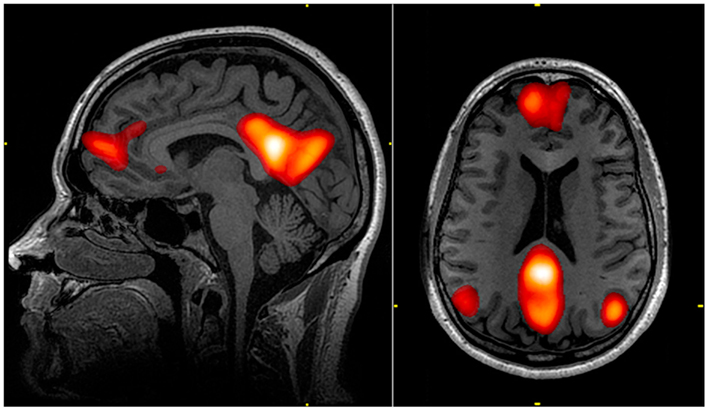
One of its main jobs is to remember the past and think about the future and about oneself. That's why the DMN is activated most of our waking hours. Unfortunately, it can get stuck in a cycle of negative thinking.
When we get caught in repetitive and negative thoughts, the DMN is hijacked and normal self-reflection turns into negative, often self-focused rumination. We can get stuck in this set of brain regions and that's what leads us to go over our problems over and over again. It's hard to switch to another brain network and to get unstuck.
That's what happens in the brain if we just get get ourselves to see things from a different perspective. We're stuck in a particular brain region.
Turning Down The Brain's Worry Circuits
In essence, the problems that we worry about are separated into two groups:
- Problems that we can do something about.
- Problems that we can't do anything about right now.
It's easy to see that these two kinds of problems need different ways of dealing with them. In other words, overthinking can be turned off by two basic methods:
- Do something about the problem.
- If that's not possible, there are a whole host of options. The most effective ones turn down the brain's worry circuits.
Doing something about the problem seems so obvious but surprisingly few people are actually capable of systematically solving a problem. For this reason, problem-focused therapy has been developed. The first step is to differentiate worries that you can do something about from those you have no influence on. Once you made that distinction, you then learn to systematically plan and act out solutions.
From this perspective, anxiety symptoms are like smoke alarms. They show that something is wrong. Problem-focused therapy helps tackle the flames - the underlying problem. The smoke will clear and the result is that there's nothing left to worry or ruminate about.
For many chronic worriers, though, their negative thoughts are so habitual that there's no problem to be solved. They worry about things they cannot influence at all. For this, too, researchers and psychologists have developed a variety of effective treatment options. The most commonly used therapies are cognitive-behavioral therapy, acceptance and commitment therapy, mindfulness-based therapies. In the final part of this guide, we will cover those three approaches and explain their main ideas.
Cognitive-Behavioral Therapy
Cognitive-behavioral therapy (CBT) is based on the insight that repetitive negative thoughts are caused by subconscious beliefs.
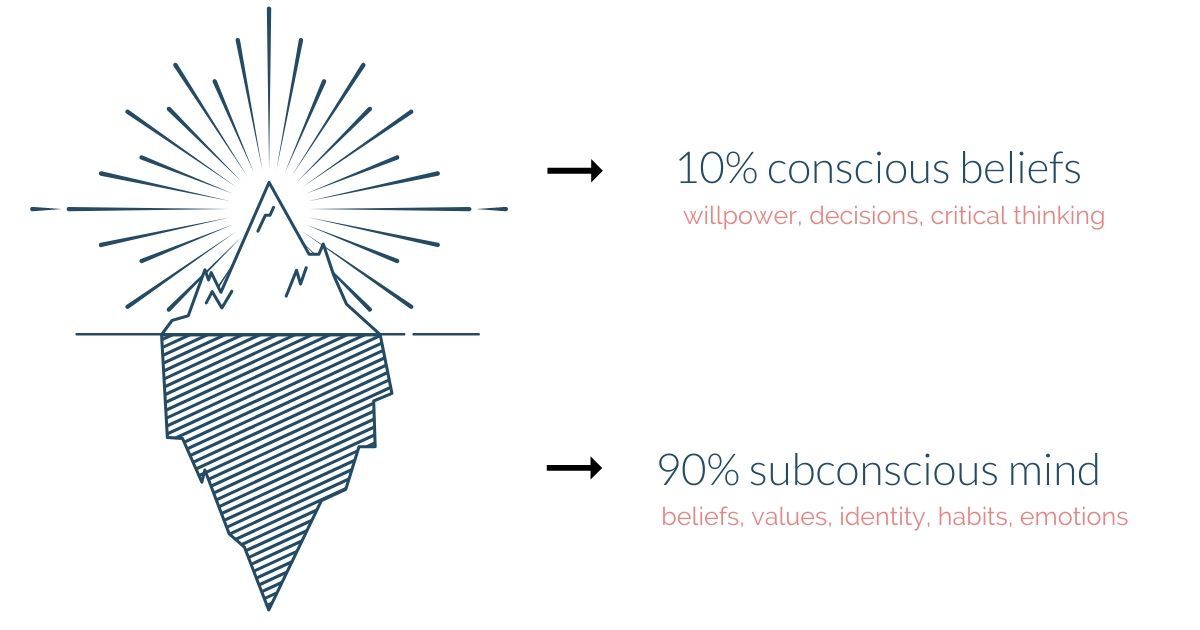
People gradually learn to identify those beliefs, the underlying cognitive distortions and eventually restructure them systematically. This can be done in various different ways. For example, in CBT people learn to question whether their negative thoughts are true or not. It also works by imagining worst-case scenarios and appropriate coping strategies.
Acceptance And Commitment Therapy
In acceptance and commitment therapy (ACT), people learn to see their negative thoughts as mere events in their mind. Or put differently, ACT teaches how to distance oneself from one’s negative thoughts.
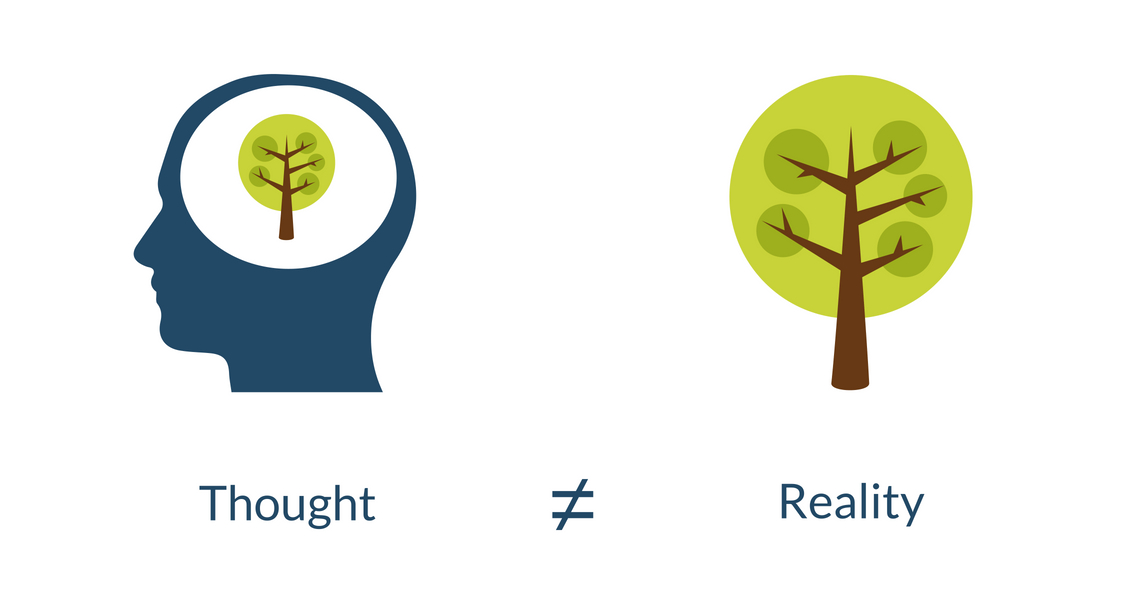
This skill is called defusion. The goal is not to avoid negative thoughts at all cost but to make them more manageable. The key here is to see which thoughts are helpful and which are not. Rather than focusing on the validity of thoughts, it's their helpfulness that matters in ACT.
Mindfulness-Based Stress Reduction
Mindfulness is a particular way of concentration that fosters the ability to pay attention to the present moment without any judgment. This skill is central to Mindfulness-based stress reduction (also known as MBSR).
Human beings - in contrast to other animals - have a space between whatever happens to them (the stimulus) and how they respond to it (the response). The ability to widen and use this space is trained by regular mindfulness practice.
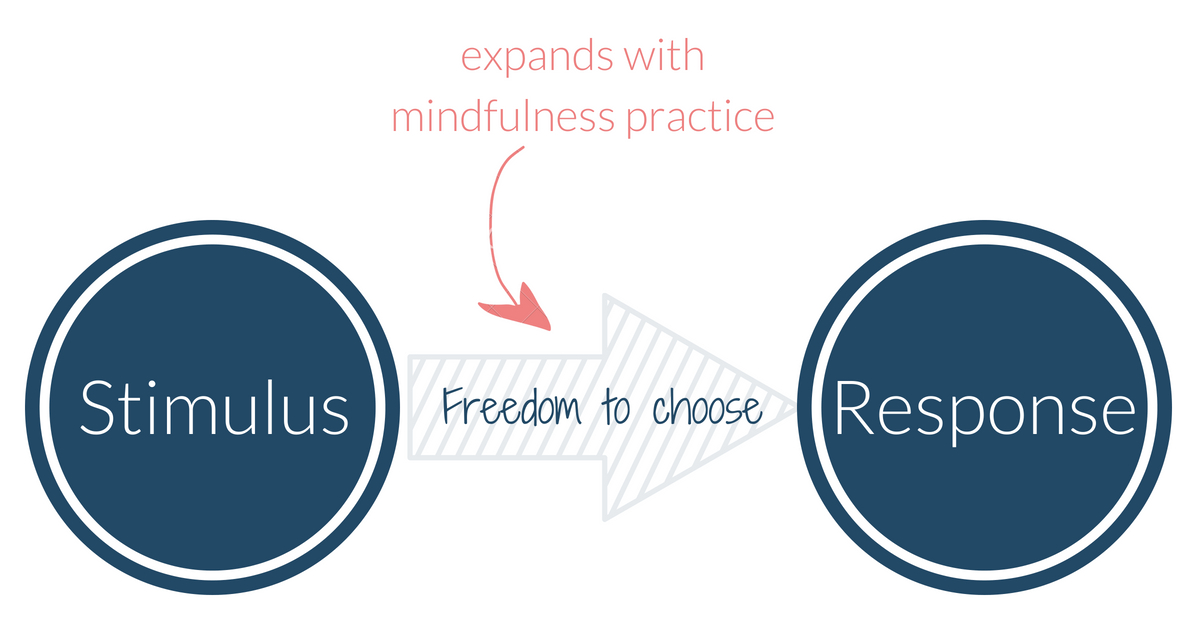
As a result, negative thoughts and external events lose their power over us as we learn to respond to them differently. Instead of obsessing about things that would usually worry us for days, it's possible to let things go more quickly.
